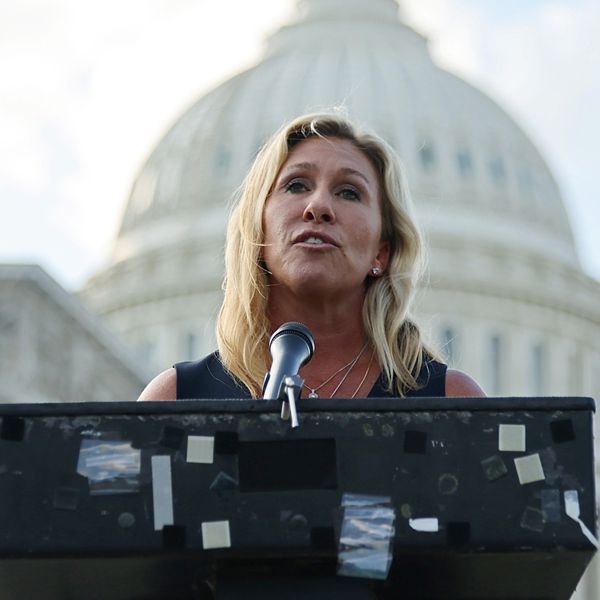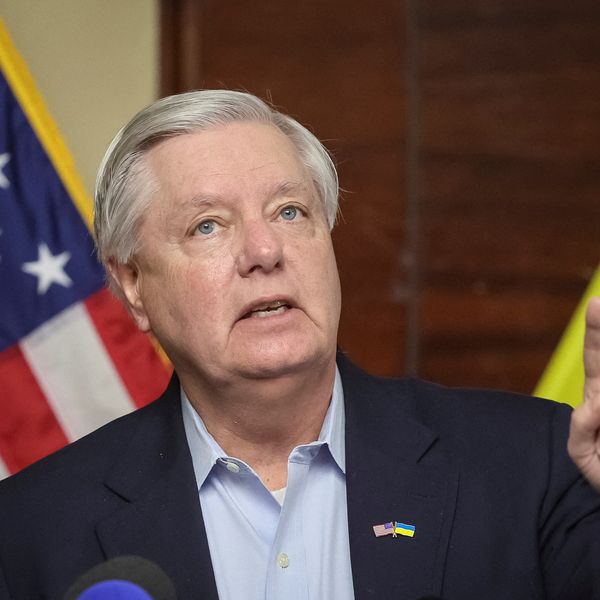This week Vermont Sen. Patrick Leahy, the Democratic chair of the powerful Senate Appropriations Committee, released the text and details for nine of 12 regular appropriations bills for the upcoming fiscal year, including the largest single bill each and every year, the Department of Defense.
To the surefire disappointment of budget hawks and Pentagon watchdogs who were hoping for some long-overdue discipline in the defense budget, Leahy dutifully followed the leaders of the Armed Services committees in the Senate and House by rubber-stamping a whopping $29.3 billion increase over the current fiscal year spending levels for DoD, a five-percent increase.
Lawmakers in the Armed Services and Appropriations committees, in both the Senate and the House, will need to hash out their differences between the authorization of appropriations recommended by Armed Services (in other words, the National Defense Authorization Act), and the actual appropriations suggested by the Appropriations Committee. Unfortunately, it seems there’s widespread support even in the Democratic Party for a DoD budget boost well beyond what President Biden recommended earlier this year, in both the NDAA and in the appropriations bills that typically follow.
Leahy was the last of four key committee leaders to tip their hand on DoD funding levels. The Armed Services committees in the Senate and House recommend year-to-year authorization levels for defense spending, which typically spans DoD and some Department of Energy nuclear programs. The Appropriations committees in each chamber, meanwhile, recommend year-to-year appropriations levels for spending at DoD and other federal agencies, which may or may not differ from the Armed Services committees’ authorization work.
Unfortunately, Leahy did not take the opportunity to reject the Senate Armed Services Committee’s $25 billion boost to the defense budget. Of 26 committee members there, only Sen. Elizabeth Warren (D-Mass.) rejected the big increase.
Instead, Leahy highlighted the “bipartisan” defense budget boost in Armed Services while justifying his 5 percent boost to DoD. Think his Republican counterpart at Senate Appropriations, Ranking Member Richard Shelby (R-Ala.) agreed? In today’s acrimonious environment, that’s a big fat no.
In fact, Shelby seems to think the defense budget boost should have been even larger. He wrote: “This one-sided process has resulted in bills that spend in excess of the Democrats’ own budget resolution and fail to give equal consideration to our nation’s defense.”
While budget and fiscal hawks may share Shelby’s view that a 13 percent increase in non-defense discretionary spending is “reckless,” the poisonous “parity” process would be a disaster for fiscal responsibility. For example, if Shelby were to strong-arm Democrats into a 13 percent budget boost for DoD, the Pentagon budget would be a jaw-dropping $788 billion. That would be nearly $91 billion higher than the current fiscal year levels, $82 billion higher than President Biden’s DoD budget request, and $60 billion higher than what Leahy just put out for DoD.
But back to reality: what would the $29 billion rush of additional cash to DoD get the nation’s taxpayers? In short, more toys for the DoD. Of the $29 billion difference between the current FY 2021military budget and the proposed FY 2022 budget from Leahy, a good portion of the increase comes from procurement (+$5.0 billion) and research, development, test and evaluation (+$9.0 billion). Rather than cut down on expensive procurement programs that are often behind schedule and over budget, lawmakers are adding to those budgets — above and beyond what the military has asked for.
The Space Force bureaucracy boondoggle would receive a $2.9 billion raise over last year’s funding levels, and the Appropriations Committee also fulfills a number of unfunded priority (wish list) items that didn’t make the cut in DoD’s original budget.
The decision to include wish list items is a peculiar one, though, given the Appropriations Committee devotes a considerable amount of ink expressing its concern that previous appropriations for “unfunded requirements” remain “unexecuted” (read: unspent).
Or, as the committee’s report puts it (emphasis mine):
“While the Committee understands that requirements evolve and associated funding requirements change during execution of the budget, such unexecuted appropriations suggest that additional details regarding the execution of appropriations provided specifically for unfunded requirements identified by the Department of Defense is warranted.”
Translation: Congress is telling DoD that the agency is not giving lawmakers enough details about whether ‘wish list’ items the Congress agreed to fund are actually being spent. One would think that such a lack of information would lead lawmakers to pull the plug on more than $19 billion in FY 2022 wish list requests.
Nope. The Appropriations Committee applies less than the Congressional equivalent of a slap on the wrist, telling the military service branches and combatant commands to include “programmatic and execution plans” the next time they submit wish lists, in FY 2023. So the circus wheel spins on.
There’s a lot more to dig into the bill, but don’t expect the 5 percent boost to last for long. If history repeats itself, defense hawks in both parties will be looking to greenlight a lot more spending — before this bill ever reaches the president’s desk.














